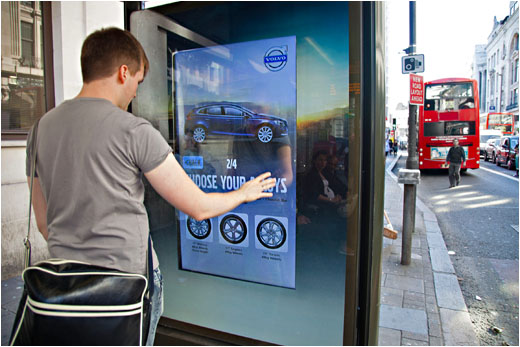Digital Signage Solutions
Digital signs are a sub segment of signage. Large installation digital signage systems are often designed byEnvironmental Graphic Designers who often design both the installation and the content to be viewed via the digital signage.
Digital Signs are used in wayfinding, placemaking, exhibitions, public installations, marketing and outdoor advertising.
Digital signs use technologies such as LCD, LED and Projection to display content such as digital images, video,streaming media, and information and can be found in public spaces, transportation systems, museums, stadiums, retail stores, hotels, restaurants, and corporate buildings etc.
Digital sign running theFirefox Web browser (identifiable by its connection failure message)
Digital signage displays use content management systems and digital media distribution systems which can either be run from personal computers and servers or regional/national media hosting providers.
Since digital signage content may be frequently and easily updated, and also because of the interactive abilities available through the accompanying employment of real-world interfaces such as embedded touch screens, movement detection and image capture devices which enable these forms of signage to understand who and how users are interacting with them, they are gaining acceptance as an alternative to static signage.
One specific use of digital signage is for out-of-home advertising in which video content, advertisements, and/or messages are displayed on digital signs with the goal of delivering targeted messages, to specific locations and/or consumers, at specific times. This is often called "digital out of home" or abbreviated as DOOH.
The Digital Signage Federation, the Digital Screenmedia Association, the Digital Place-based Advertising Association and OVAB Europe are some of the non-profit industry trade groups representing firms and professionals in the digital signage market.
Digital signs are used for many different purposes and there is no definitive list. However, below are some of the most common applications of digital sign:
Public information – news, weather, traffic and local (location specific) information, such as building directory with map, fire exits and traveler information.
Internal information - corporate messages, such as health & safety items, news, and so forth.
Menu information – pricing, photos, ingredients, and other information about the food(s) being offered, including nutritional facts.
Advertising – usually either related to the location of the sign or using the audience reach of the screens for general advertising.
Brand building – in-store digital sign to promote the brand and build a brand identity.
Influencing customer behavior – directing customers to different areas, increasing the "dwell time" on the store premises, and a wide range of other uses in service of such influence.
Enhancing customer experience – applications include the reduction of perceived wait time in the waiting areas of restaurants and other retail operations, bank queues, and similar circumstances, as well as demonstrations, such as those of recipes in food stores, among other examples.
Enhancing the environment – with interactive screens (in the floor, for example, as with "informational footsteps" found in some tourist attractions, museums, and the like) or with other means of "dynamic wayfinding".
We provide intrusion detection solutions based on opensource and proprietary software. Please contact our Applications engineer for details.
